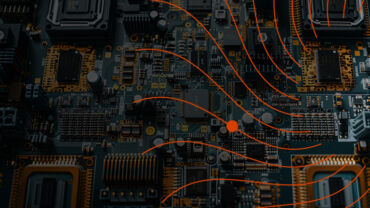In a panel discussion with Indirect Tax (IDT) experts hosted by Thomson Reuters in London, the prospect of a looming recession and tightening budgets was certainly a top concern, but so were many familiar issues, including a recent major push by Oracle and SAP to upgrade their ERP environments, which will continue to have ripple effects in the coming year.
Nevertheless, the subject of the panel, “How to take charge of change,” prompted a wide-ranging conversation about the nature and scope of change in IDT and what those in the middle of it can do to make 2023 as productive as possible, despite the obstacles they will inevitably face. Click here to view the panel discussion in more detail.
What challenges come with change?
“It’s been a rollercoaster with changing rules and regulations across the globe,” said Gaurav Mahajan, Global IDT Compliance Manager for Thomson Reuters. “Our roles are also changing constantly, and we need to keep up. The real challenge is to get key stakeholders at the table and deliver the word that we can help make change happen,” he said—positive change focused not only on compliance but on helping the company prosper and grow.
In the trenches, however, it’s clear that “supporting the business” comes with its own technical challenges.
Fiona Gibson, Tax Systems Lead at the global publishing giant Wiley, agreed that the movement of the tax landscape and numerous software patches and upgrades have kept her busy over the past couple of years, but so have the complexities of implementing the company’s new tax engine. “In trying to support the business, you have to make sure the structure underneath—the underlying technology—can support the new system, and that it can comply with security needs and all that,” she explained.
And, at HP, Tax Process Owner and Technologist Juergen Wendel lamented that when switching to the cloud “you never get to harmonize all the interfaces” from legacy systems, especially when businesses are reluctant to invest in a tax engine and they already think their IT environment is too expensive.
How to bring value to the table
Despite the fact that tax technology saves time and money, reduces the risk of error, increases accuracy, and provides more organized data for easier compliance, resistance to technical investment is still strong in some quarters, and tax is rarely a top priority. To combat these and other issues facing IDT professionals in the near future, these experts suggested a number of different strategies.
- When facing budget resistance, Thomson Reuters’ Mahajan suggested that “it’s more about getting senior leaders to understand the value the technology will bring.” It’s also persuasive “to talk about the impact of not investing in technology, from a financial and compliance point of view,” he said.
- At Wiley, Fiona Gibson says upgrading the enterprise to the cloud will be her main focus in 2023, but she’s aware that competing priorities and other projects could interfere. Her strategy to stay on track: proper planning.
- “Proper planning will give you a successful outcome,” Gibson insisted. “The problem is that tax is often thought of as the end of the process, rather than the beginning, so it’s important to try to get involved early so you can deliver on your own objectives.”
- At HP, Wendel says the company’s interest in robotics has prompted the leadership to issue an innovative challenge. Employees and managers have therefore all been asked to think of ways their own day-to-day jobs could be automated.
- “The idea is to drive change and innovation and bring people closer to these self-use tools,” said Wendel. Though it is a company-wide initiative, “I would like to turn this around and make it useful for the tax function,” he said, perhaps by using Alteryx “to have people do their own automation.”
Evolving and adapting
Indeed, part of the change IDT professionals are currently facing has to do with how different technologies are forcing them to evolve and adapt.
Tanya Marston is the Tax Team Manager at SThree, a STEM company based in London with offices in Glasgow. Marston says IDT professionals “don’t have a choice”—they have to understand IT better and become “hybrid” tax technologists with a working knowledge of both tax and IT.
“It’s necessary for us to learn about IT because we have to understand how transactions flow right from the beginning,” Marston said. “We have to understand what triggers systems to allocate tax codes so that we can do our jobs properly and help make sure companies are submitting accurate returns.”
For the sake of the company, this knowledge needs to be baked into development and training, she said, adding that because tax and IT are now tied together tighter than ever, “it’s also key to have junior people involved right from the beginning in order to future-proof them.”
Embracing and anticipating changes to come is the only way tax can avoid being displaced by competing priorities, Marston said. “Timing is important,” she advised, “it’s about getting business strategy and [tax] priorities to fit together.”
In the meantime, everyone on the panel agreed that IDT leaders are going to have their hands full, no matter what. Regulatory changes, jurisdictional issues, software upgrades, budget disputes, competition for talent, and plenty of internal politics—all of it will continue to be part of the conversation in 2023. But don’t just brace for change, these experts advise—expect it and plan for it.
 |
|











